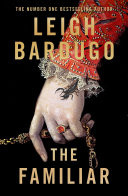
This book went too deep into genetics in a lot of the chapters for me, but most of the chapters provide a good history of domestication, aspects of the animal that have changed, and evolutionary history of the animals. It was fascinating to learn more about various domesticated animals, including camels, goats, and Guinea pigs. I wish it had included more animals species and less about humans.
3/5 stars, read to learn about various animals
thereadingpal Never heard of this book but it seems really interesting, maybe a tad bit difficult 2y
iread2much @thereadingpal it was super interesting! The chapters on dogs and cats had a LOT of genetic information in it, but the other chapters did not go so deep. I just skimmed the super deep genetic analysis, but the evolutionary history and biology was really fascinating and accessible 2y
Hooked_on_books What a fantastic cover! (And a lovely model in your pic 🐶💚) 2y
iread2much @Hooked_on_books thank you! My reading companion doesn‘t always like all my photos 😅 the cover is super nice on this book, and a good illustration of some of the author‘s key points 2y
23 likes4 comments

















